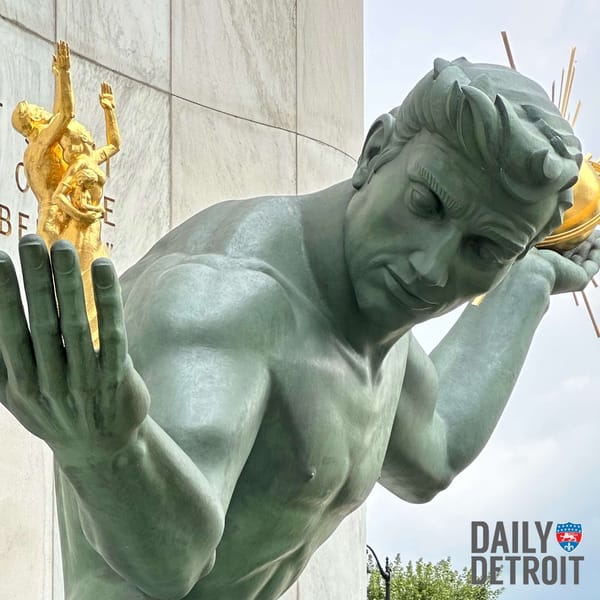With construction on the new Little Caesars Arena progressing smoothly, the Red Wings will have a new home for their 2017-2018 season. Little Caesars Arena will be the Red Wings’ third home since their creation, and it will likely play a large part in Detroit’s ever-developing identity.
But hockey fans and Detroiters still hold much love and nostalgia for the past – and when it comes to old hockey barns, The Detroit Olympia was a beloved gem and so let’s take a look back while we’re building the new to celebrate the old.
The idea for Olympia came about in 1926 or 1927. It was born from the desire to mark Detroit as a city for important conventions as well as sports, but it ended up being much more than that.

Originally, Olympia started as a humble hockey stadium, but city officials got ahold of the plans and decided they wanted Detroit to have more than an arena. They wanted a convention center.
To ensure that their vision of the arena was realized, officials hired C. Howard Crane as architect. Crane had previously designed Detroit’s Orchestra Hall and the Capitol Theatre (now known as the Detroit Opera House), so they knew he could meet their exacting demands.
Crane drafted impressive blueprints, and when Olympia opened on October 15, 1927, it was the largest indoor skating rink in the U.S. It had 77,393 square feet of floor space that hid 74,880 square feet of pipes for freezing the ice. Originally, the area had 11,563 seats, but more were added throughout the years.


Construction started on March 8, 1927. Total construction costs for Olympia came to about $2.5 million, the equivalent of $34.1 million today.
The Old Red Barn, as Olympia was nicknamed, was located outside of downtown at 5920 Grand River Avenue.

Olympia was the first home of the Detroit Cougars, later renamed the Red Wings, who played their first game in the stadium on November 22, 1927. Though people crammed into Olympia to see the game, they were probably more excited about the arena than their team. Fans weren’t very supportive of the Cougars, which led to the team being bought by new owners and renamed the Red Wings in 1932.
Olympia Arena saw much of the glory days of Detroit’s sporting history. It was home to the Red Wings during their first season as Stanley Cup Champions, and it saw Joe Louis fight when he was a relatively unknown local boxer. Gordie Howe played at the Old Red Barn as a Red Wing from 1946 to 1971.

The arena was more than just a sports venue, however. It became a symbol of Detroit and brought Detroiters together to celebrate their victories and mourn their losses. After a well-fought Red Wings game, it wasn’t uncommon for Detroiters to take to the streets and celebrate together. Olympia helped foster pride in the city and served as a major social space for people.
https://www.youtube.com/watch?v=YQh6wLMUd1g
Beginning in the 1950s, Olympia started hosting concerts, and the number of events held their only increased into the 70s. Artists who played at Olympia include legends like Elvis Presley, The Beatles, The Rolling Stones, The Jackson Five, Pink Floyd, Stevie Wonder, Elton John, and David Bowie.

Unfortunately, Olympia couldn’t stand up to the test of time. After the 1967 riots, the neighborhood around the building began to deteriorate. After the City of Pontiac managed to lure the Lions away from Downtown, it went for the Red Wings, too. The city offered the team a new arena, and the Red Wings seriously considered the offer. However, the City of Detroit made a counteroffer, and proposed a riverfront arena with a more reasonable rent.
The Red Wings accepted the offer, and the Joe Louis Arena became their new home in December 1979. On December 15, 1979, the Red Wings played their final game in Olympia. The team played the Quebec Nordiques, and they tied, 4-4. It was a rather lackluster goodbye to a building that had served Detroit for over 50 years. A few months later, on February 21, 1980, the Old Red Barn was closed permanently.

But that wasn’t the end of the arena. It continued to keep watch over Grand River Avenue, crumbling and falling into a general state of disrepair. For seven years Olympia remained, a fixture of Detroit’s storied past, slowly becoming an eyesore. In 1987, the building that saw music and sports legends alike, was demolished.
Today, the Michigan National Guard’s Olympia Armory occupies the site where the Old Red Barn once thrilled Detroiters. There’s also a historical marker commemorating the site.
However, also important is the mark left by the memories created there in the hearts and minds of many Detroiters.










